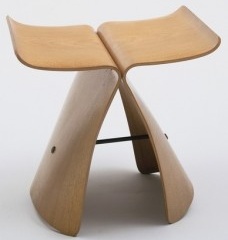
newspaper
agenda cultural
“Plywood,” explained Popular Science in 1948, “is a layercake of lumber and glue.” In the history of design, plywood is also an important modern material that has given 20th-century designers of everyday objects, furniture, and even architecture greater flexibility in shaping modern forms at an industrial scale. This installation features examples, drawn from MoMA's collection, of modern designs that take advantage of the formal and aesthetic possibilities offered by plywood, from around 1930 through the 1950s. Archival photographs illuminate the process of design and manufacture in plywood. Iconic furniture by Alvar Aalto, Charles and Ray Eames, Eero Saarinen, and Arne Jacobsen appear alongside organic platters by Tapio Wirkkala (1951), Sori Yanagi’s Butterfly Stool (1956), an architectural model for a prefabricated house by Marcel Breuer (1943), and experimental designs for plywood in the aeronautics industry.

Sori Yanagi. Butterfly Stool. 1956. Molded plywood and metal, 15 1/2 x 17 3/8 x 12 1/8" (39.4 x 44.1 x 30.8 cm). Manufactured by Tendo Co., Ltd., Tokyo. The Museum of Modern Art, New York. Gift of the designer, 1958

